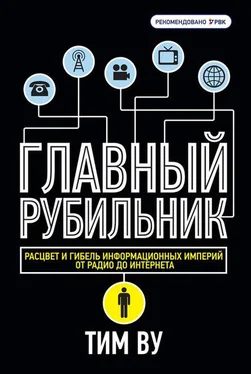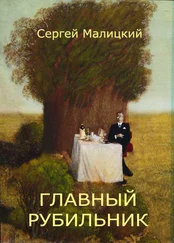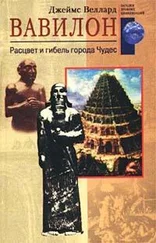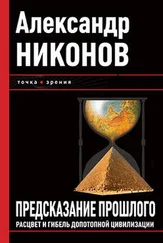Условия постановления суда 1956 г. по итогам процесса против AT&T см. в Gerald W. Brock, Telecommunication Policy for the Information Age: From Monopoly to Competition (Cambridge, MA: Harvard University Press, 1998), 71–72.
Утверждения сотрудников Bell см. в Constantine Raymond Kraus and Alfred W. Duerig, The Rape of Ma Bell: The Criminal Wrecking of the Best Telephone System in the World (Secaucus, NJ: Lyle Stuart, 1988), 13. Заявление Голдуотера см. там же, 103.
Приведенная статистика взята из U.S. v. Paramount Pictures, 85 F.Supp. 881 (S.D.N.Y. 1949). Общее обсуждение данных по голливудским кинотеатрам «первого экрана» в 1930–1940-х гг. см. в Andrew Hanssen, «The Block Booking of Films Reexamined», in John Sedgwick and Michael Pokorny, eds., An Economic History of Film (New York: Routledge, 2005), 121–151.
Thurman W. Arnold, The Folklore of Capitalism (New Haven: Yale University Press, 1937), 211. Разумеется, в свете этих противоречивых мотивов Арнольд считал, что антимонопольное законодательство в стране систематически игнорируется. См. там же, 207–230.
Alfred D. Chandler, Jr., The Visible Hand: The Managerial Revolution in American Business (Cambridge, MA: Belknap Press, 1977).
«Arnold Demands a New Movie Deal», New York Times, April 23, 1940, 19. Информацию по делу против AMA см. в United States v. American Medical Association, 110 F.2d 703 (D.C. Cir. 1940). С отсрочкой Верховного суда 1938 г. по делу против студий можно познакомиться в Interstate Circuit v. United States, 304 U.S. 55 (1938).
Окончательное решение Верховного суда, принятое в 1948 г. по процессу, вошедшему в историю как «дело Paramount», см. в United States v. Paramount Pictures, Inc., 334 U.S. 131 (1948).
Довод Крэнделла о том, что дело Paramount не привело к снижению цен на билеты, см. в Robert W. Crandall, «Postwar Performance of the Motion-Picture Industry: The Economics», Antitrust Bulletin 20 (1975): 61. Комментарий Андерсона, а также дальнейшее обсуждение влияния цветущей телеотрасли на кинематограф см. в Martin Halliwell, American Culture in the 1950s (Edinburgh: Edinburgh University Press, 2007), 147. Оригинальная работа Андерсона: Christopher Anderson, Hollywood TV: The Studio System in the Fifties (Austin: University of Texas Press, 1994), 1.
Richard E. Caves, Creative Industries: Contracts Between Art and Commerce (Cambridge, MA: Harvard University Press, 2002), 95–96.
Обсуждение ключевых игроков и событий в наступлении эпохи Нового Голливуда, свободного от оков Кодекса Хейса, см. в Peter Biskind, Easy Riders, Raging Bulls: How the Sex— Drugs— and Rock’N Roll Generation Saved Hollywood (New York: Simon and Schuster Paperbacks, 1998), 23–52.
Jack Valenti, The Voluntary Movie Rating System: How It Began, Its Purpose, the Public Reaction (pamphlet, 1996).
Бремя Кодекса в 1950-х и 1960-х гг. становилось все меньше и меньше. В 1968 г. вместо него была принята рейтинговая система Американской ассоциации кино. См. Geoff King, New Hollywood Cinema: An Introduction (London: IB Tauris, 2002), 31. Общее обсуждение развития и сути Нового Голливуда см. там же, 1–33.
Полный текст письма см. в J.C.R. Licklider, «Memorandum for Members and Affiliates of the Intergalactic Computer Network», KurzweilAI.net, www.kurzweilai.net/articles/art0366.html?printable=1.
Узнать о ранних годах и карьере Ликлайдера можно в H. Peter Alesso and Craig Forsythe Smith, Connections: Patterns of Discovery (Hoboken, NJ: Wiley & Sons, 2008), 60; о его жизни — M. Mitchell Waldrop, The Dream Machine: J.C.R. Licklider and the Revolution That Made Computing Personal (New York: Penguin, 2002).
Рейнгольд описывает компьютер AN/FSQ7 в Howard Rheingold, Tools for Thought: The History and Future of Mind-Expanding Technology (Cambridge, MA: MIT Press, 2000), 142–144.
J. C. R. Licklider, «Man-Computer Symbiosis», IRE Transactions on Human Factors in Electronics HFE1 (1960): 4.
John Markoff, What the Dormouse Said: How the Sixties Counterculture Shaped the Personal Computer Industry (New York: Penguin, 2005), 9.
Подробное описание профессионального пути и инноваций Бэрана см. Katie Hafner and Matthew Lyon, Where Wizards Stay Up Late: The Origins of the Internet (New York: Touchstone, 1996), 53–67.
История в начале главы основана на беседе автора с Ральфом Ли Смитом 14 сентября 2008 г. Его статья «The Wired Nation» вышла в Nation, May 18, 1970, 582.
Обсуждение проекта и порожденные им споры см. в Richard P. Hunt, «Expressway Vote Delayed by City: Final Decision Is Postponed After 6-Hour Hearing», New York Times, December 7, 1962; также см. Hilary Ballon and Kenneth T. Jackson, eds., Robert Moses and the Modern City: The Transformation of New York (New York: W. W. Norton, 2008).
Книги по истории американской кабельной отрасли встречаются относительно редко. См. Megan Mullen, The Rise of Cable Programming in the United States: Revolution or Evolution (Austin: University of Texas Press, 2003), 90–93; Patrick Parsons, Blue Skies: A History of Cable Television (Philadelphia: Temple University Press, 2008); а также Patrick R. Parsons and Robert M. Frieden, The Cable and Satellite Television Industries (Boston: Allyn & Bacon, 1997). Также см. Brian Lockman and Don Sarvey, Pioneers of Cable Television: The Pennsylvania Founders of an Industry (Jefferson, NC: McFarland, 2005).
Hearings Before the Senate Committee on Interstate and Foreign Commerce, United States Senate, 85th Cong., 2d Sess., 1959 (statement of William C. Grove).
House Committee on the Judiciary, 89th Cong., Copyright Law Revision Part 6, Supplementary Report of the Register of Copyrights on the General Revision of the U.S. Copyright Law: 1965 Revision Bill 42 (Comm. Print 1965).
Читать дальше
Конец ознакомительного отрывка
Купить книгу












